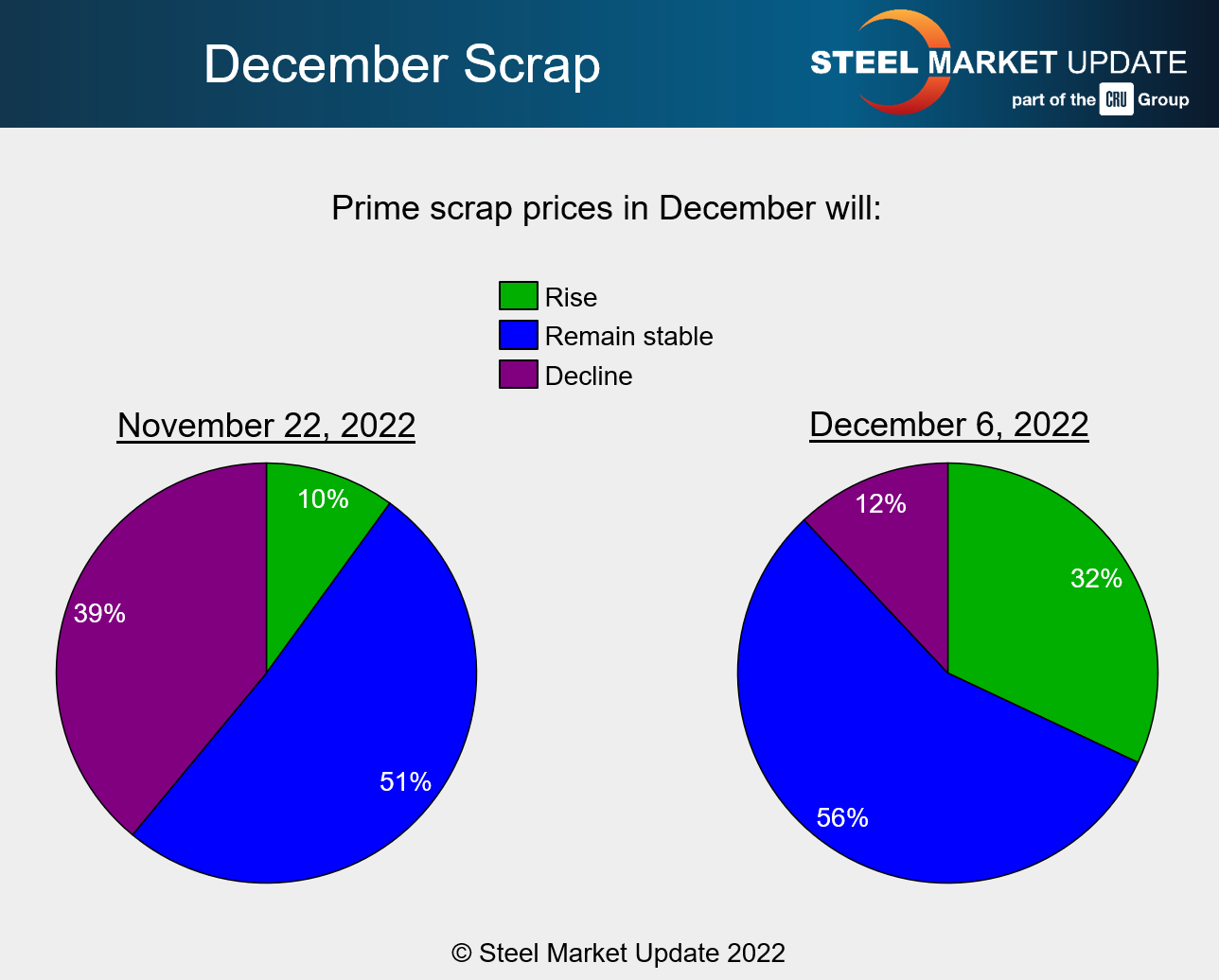Trade Cases

Scrap Prices Rise in December, Higher Expectations for January
Written by Brett Linton
December 9, 2022
Ferrous scrap prices increased from November to December, according to Steel Market Update sources, breaking the seven-month cycle of price declines. Buyers reported prime scrap prices increased roughly $30 per gross ton, while shredded prices rose $20 per ton.
![]() “Scrap prices are up a minimum $20-30 per ton this month,” reported one scrap executive. He noted that there are quiet deals being done at higher prices, and southern dealers are “insisting on a $30 per ton increase on shredded and HMS”.
“Scrap prices are up a minimum $20-30 per ton this month,” reported one scrap executive. He noted that there are quiet deals being done at higher prices, and southern dealers are “insisting on a $30 per ton increase on shredded and HMS”.
Our scrap prices for November are as follows:
• Busheling at $360–400 per gross ton, averaging $380, up $35 from last month
• Shredded at $380–400 per gross ton, averaging $390, up $20 from last month
• HMS at $300–330 per gross ton, averaging $315, up $10 from last month
Buyers expect prices to continue to rise into January due to supply limitations. “Dealers do not have very much inventory, and with winter and the holidays upon us, no way to improve the flows,” said one source. “If you had scrap, you’d be hesitant to sell now at these prices.”
Another source remarked, “Farther down the scrap food chain shredders are already raising feedstock prices $35-50 per ton.” He added that busheling could increase an additional $50 per ton in January.
SMU polled steel buyers earlier this week, asking what their expectations were for December scrap prices. Over half expected prices to remain stable, similar to mid-November expectations. Only 32% of those responding expected prices to increase, compared to 10% two weeks prior.

PSA: SMU members can chart various scrap prices as far back as 2007 using our interactive pricing tool.
By Brett Linton, Brett@SteelMarketUpdate.com

Brett Linton
Read more from Brett LintonLatest in Trade Cases

SMU Survey: Less support seen for Trump tariff policies
Meanwhile, an increasing number think it's too early to say whether the penalties are going to bring more manufacturing to the US.

CRU: USW seeks exclusion for Canada from Trump’s tariffs
The union is also urging stronger enforcement against countries such as China which break trade rules, and a coordinated Canada-US strategy to protect union jobs across the North America

Price on trade: A lot happened last week – and it wasn’t all about tariffs
Should foreign investment be allowed to reshape the American steel Industry? Not to be lost in the recent on-again-off-again tariff frenzy, Nippon Steel’s proposed takeover of U.S. Steel has also found itself in President Trump’s crosshairs when it comes to trade and industrial policy. Nippon Steel initially announced its nearly $15-billion bid for U.S. Steel […]

Trump signs executive order aimed at making US shipbuilding ‘great again’
President Trump on Wednesday signed an executive order meant to breathe new life into American shipbuilding and curb Chinese dominance in the sector.

Trump still against selling USS to Japanese firm: Report
Despite ordering a new review of Nippon Steel’s bid for U.S. Steel, President Trump said he is still against selling USS to a Japanese company, according to media reports.
